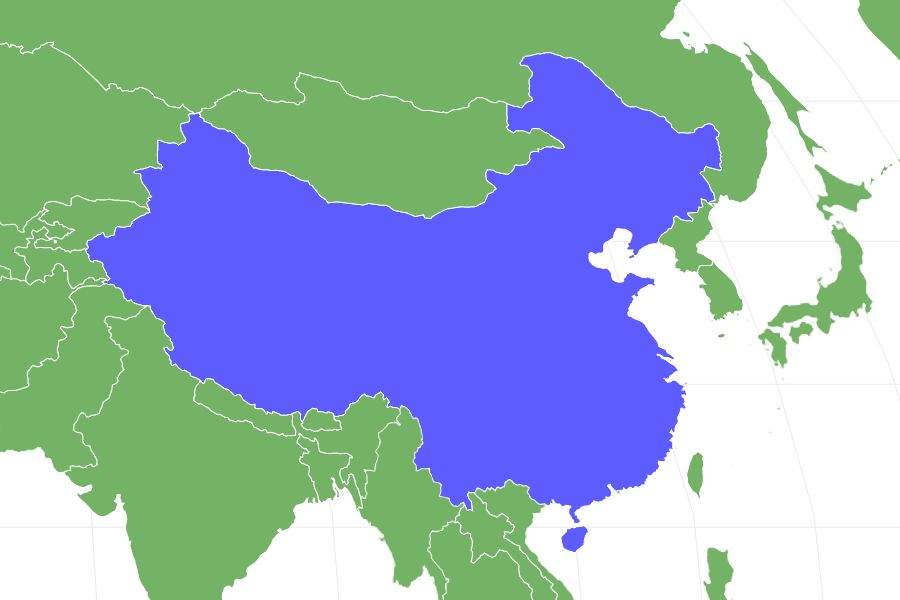Andrewsarchus
Andrewsarchus mongoliensis
Andrewsarchus is the largest terrestrial mammalian carnivore to have ever lived.
Advertisement
Andrewsarchus Scientific Classification
- Kingdom
- Animalia
- Phylum
- Chordata
- Class
- Mammalia
- Order
- Artiodactyla
- Genus
- Andrewsarchus
- Scientific Name
- Andrewsarchus mongoliensis
Read our Complete Guide to Classification of Animals.
Andrewsarchus Conservation Status
Andrewsarchus Facts
- Prey
- Turtles, carrion, and shellfish.
- Fun Fact
- Andrewsarchus is the largest terrestrial mammalian carnivore to have ever lived.
- Most Distinctive Feature
- Hooved feet with two weight bearing toes.
- Distinctive Feature
- Enormous skulls with long snout
- Habitat
- Coastal areas in subtropical and temperate forests
- Diet
- Carnivore
Andrewsarchus Physical Characteristics
- Weight
- 2200 pounds
- Height
- 6 feet 6 inches
- Length
- 16 feet
- Venomous
- No
- Aggression
- Medium
View all of the Andrewsarchus images!
Andrewsarchus is perhaps the largest terrestrial mammalian carnivore of all time.
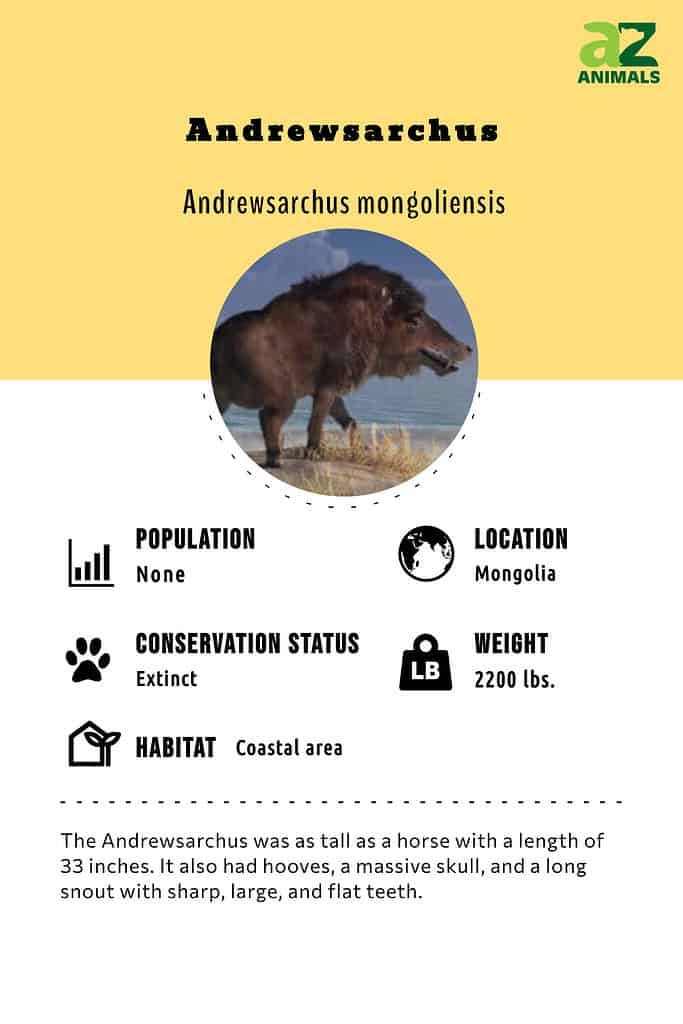
Andrewsarchus is an extinct mammal that lived in the inner Mongolia region of China during the middle Eocene epoch about 56 to 33.9 million years ago. It was a large predatory animal closely related to present-day hippos and aquatic mammals such as whales. Not much is known about this mammal because only a single large skull fossil has been found. Based on the skull size, the Andrewsarchus is considered the largest mammalian carnivore on land.
Scientific Name and Classification
The fossil of the Andrewsarchus was discovered in the spring of 1923 during the Central Asiatic Expedition led by the American explorer and the director of the American Museum of Natural History, Roy Chapman Andrews. The specimen was named Andrewsarchus in his honor, the Greek “archus” meaning “ruler.” The species name mongoliensis is a reference to Mongolia, where the fossil was found.
The earliest studies classified this mammal as a mesonychid. This is an order of small carnivorous ungulates that lived during the Paleocene era. However, subsequent studies classified the Andrewsarchus as an artiodactyl. This is an order of even-toed, hoofed animals known to bear their weight on two of their five toes (usually the third and fourth toes). The remaining toes are either vestigial or entirely absent. Other artiodactyls include pigs, camels, hippos, deer, giraffes, sheep, goats, and cattle.
Besides the Order Artiodactyl, the Andrewsarchus belonged to the Clade Cetancodontamorpha and the Family Andrewsarachidae. The Genus Andrewsarchus had two species, the mongoliensis (the type species) and the crassum, both of which are extinct..
Description and Size
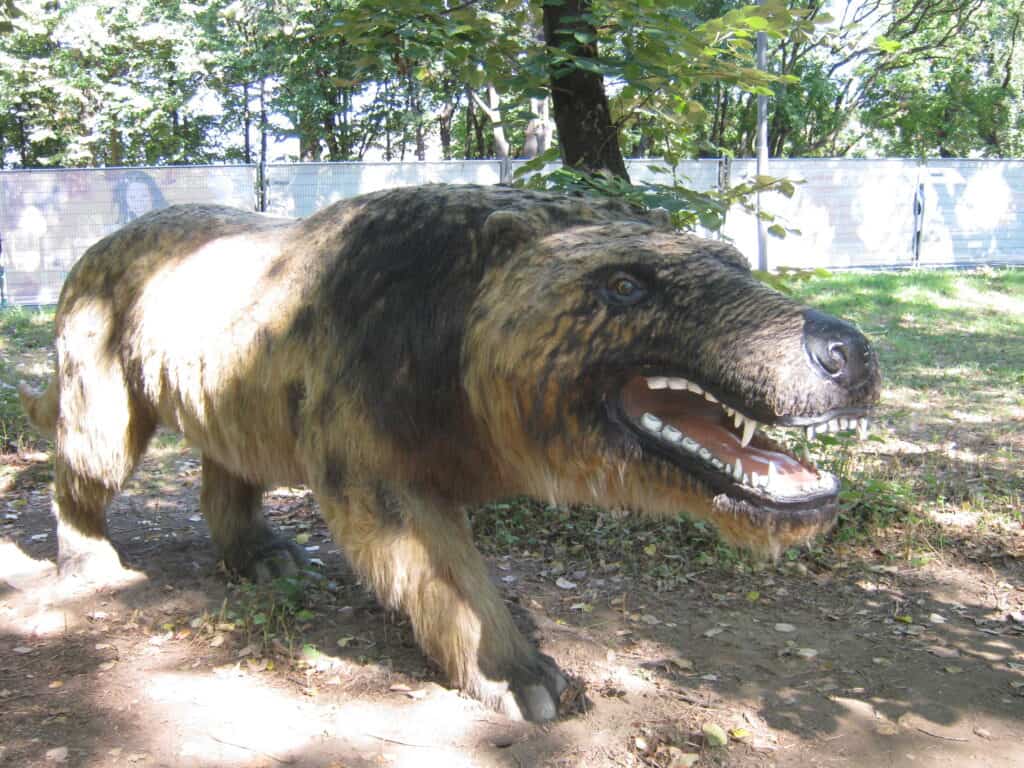
Based on the skull size, the
Andrewsarchusis considered the largest mammalian carnivore on land.
©Boris Dimitrov, CC BY-SA 3.0 <https://creativecommons.org/licenses/by-sa/3.0>, via Wikimedia Commons – License
Andrewsarchus was a large carnivorous mammal estimated to have been as tall as a horse. If its estimated skull size is correct, it would be the largest known carnivorous mammal ever discovered. Andrewsarchus was about 6 feet 6 inches tall and 16 feet long. It weighed about 2204 pounds. This is quite massive, considering the fact that modern brown bears weigh roughly 1400 pounds on average.
This prehistoric animal had a massive skull that was nearly as long as 32.8 inches. It also had a long snout with sharp, large, and flat teeth that must have been used to crush bones. It had one canine, three incisors, four premolars, and three molars at each side of the jaw. This dentition is one of the many similarities between this mammal and the entelodonts (pig-like artiodactyls that lived during the Eocene). Like other ungulates, they had hooves on their feet.
Diet
Since the discovery of the Andrewsarchus’s skull, there have been arguments about its diet. The most common theory is that this animal was a carnivore. It is usually classified alongside other carnivorous hoofed mammals such as the mesonychids. Experts think the Andrewsarchus was a scavenger and a hunter. But it probably had a varied diet that would have included any prey available. Since the fossil was found in a prehistoric coastal area, it probably fed on turtles, carrion, and shellfish.
Habitat
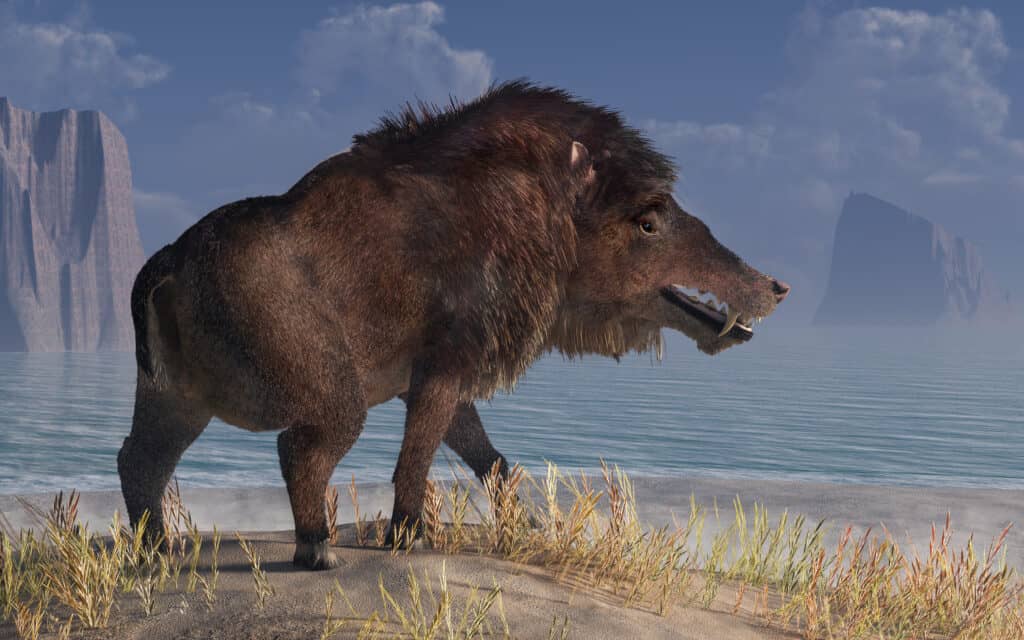
An Andrewsarchus shown in a coastal area, which was probably its habitat.
©Daniel Eskridge/Shutterstock.com
Andrewsarchus lived during the middle Eocene in an area in present-day Inner Mongolia, China. This was about 40 to 35 million years ago. The Eocene Period was the warmest during the Cenozoic, characterized by subtropical and temperate forests. The fossil was found in a coastal area, indicating that it lived and hunted there.
Threats and Predators
If the Andrewsarchus was the largest carnivorous mammal on land, it likely did not have a lot of natural predators. It was a predator itself and dominated the terrestrial ecosystem where it lived during the Eocene Epoch.
Discoveries and Fossils
Kan Chuen Pao was the person who actually discovered Andrewsarchus in the Irdin Manha formation in Mongolia on the 1923 expedition led by Andrews. The single skull bone is the only fossil of this animal found to date. This is why so little is known about the prehistoric carnivore. The skull is on display at the American Museum of History, New York, New York.
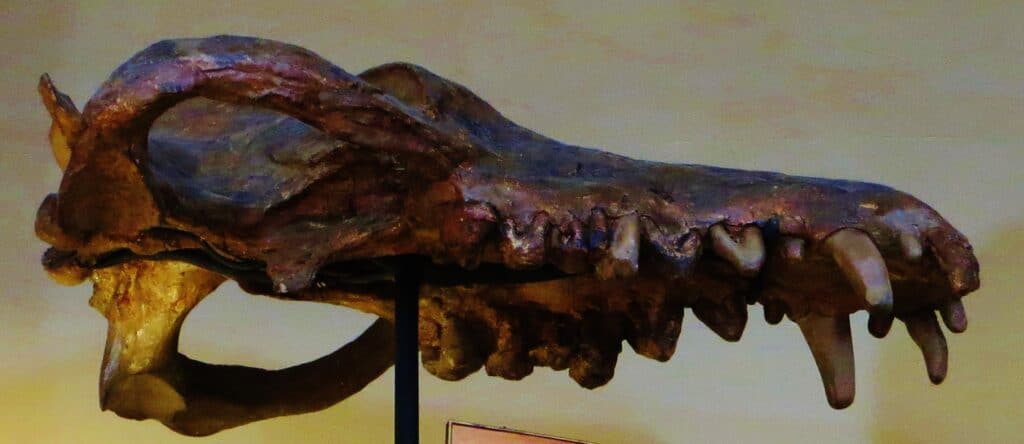
A single skull bone is the only fossil of the
Andrewsarchusfound to date, which is why so little is known about this prehistoric carnivore.
©Ghedoghedo, CC BY-SA 3.0 <https://creativecommons.org/licenses/by-sa/3.0>, via Wikimedia Commons – License
Extinction
Andrewsarchus likely died out during the Eocene epoch about 36 million years ago. The exact cause of its disappearance isn’t known, but it was probably connected to changing climatic conditions. Experts think its population declined steadily until they all died out eventually.
Similar Animals
Some similar animals to Andrewsarchus are:
- Mesonychid — Mesonychid is an extinct carnivorous ungulate that lived between the Paleocene to Eocene epochs. Andrewsarchus was first classified as a mesonychid due to its numerous similarities.
- Hippos — Andrewsarchus belongs to the order Artiodactyla, which includes the hippos. The hoof, enormous head, and stumpy legs are similar to the Andewsarchus, although they were slightly smaller in size.
- Whales — Like Andrewsarchus, whales also belong to the Artiodactyla order. Whales, along with other marine mammals like dolphins and porpoises, evolved from hoofed mammals like the Andrewsarchus.
Related Animals
View all 194 animals that start with AAndrewsarchus FAQs (Frequently Asked Questions)
When was the Andewsarchus alive?
Andrewsarchus lived during the middle Eocene epoch of the Paleogene Period. This animal went extinct about 45 million years ago.
How big was Andrewsarchus?
Due to limited fossils, it has been challenging to estimate the exact size of the Andrewsarchus. However, inferences based on their relationship with other prehistoric hoofed mammals indicate they were about six feet tall at the shoulder and up to 12 feet long. They also weighed up to 2200 pounds. Based on these estimates, Andrewsarchus is the largest known carnivorous land mammal that ever lived.
Was Andrewsarchus a dog?
Andrewsarchus was not a dog, and it is not in any way related to dogs. It was a carnivorous mammal with little or no physical similarity to dogs.
Was Andrewsarchus a hyena?
Andrewsarchus is not related to the hyena family. They were also meat eaters and could have been scavengers, but that might be their only similarities to hyenas. Andrewsarchus is more related to modern hooved animals (goats and sheep) than hyenas.
Thank you for reading! Have some feedback for us? Contact the AZ Animals editorial team.
Sources
- Wikipedia, Available here: https://en.wikipedia.org/wiki/Andrewsarchus
- American Museum of Natural History, Available here: https://www.amnh.org/explore/news-blogs/on-exhibit-posts/andrewsarchus
- Prehistoric Fauna, Available here: https://prehistoric-fauna.com/Andrewsarchus

